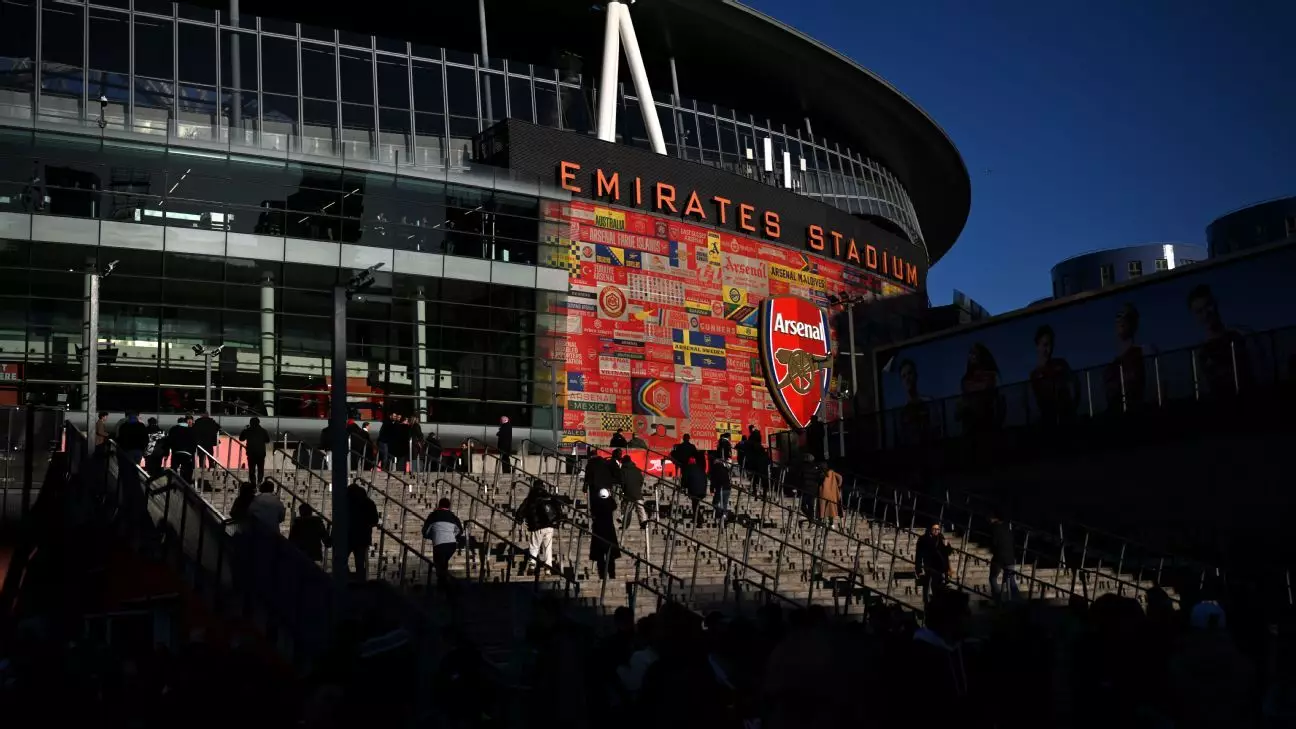Arsenal Football Club has unveiled its annual financial report, revealing a loss of £17.7 million ($22.3 million) for the fiscal year ending May 31, 2024. This announcement juxtaposes the impressive club-record revenue of £616.6 million generated during the same period, reflecting a substantial increase from the previous year’s revenue of £466.7 million. This remarkable growth can be attributed to various factors, including the return to the UEFA Champions League and substantial earnings from player trading, which amounted to £52.4 million.
Mikel Arteta’s team not only made a notable comeback to the Champions League after a six-year absence but also advanced to the quarterfinals, although they faced elimination against Bayern Munich with a narrow aggregate score of 3-2. Additionally, the Arsenal Women’s team contributed to the club’s visibility and revenue, notably breaking the Women’s Super League (WSL) attendance record with a staggering turnout of 60,160 for their match against Manchester United held at the Emirates Stadium. This widening appeal fosters deeper engagement with fans and translates to increased revenue from matchday sales and merchandise.
Despite the revenue growth, Arsenal’s financial landscape reveals significant challenges, particularly concerning increasing wage bills, which soared from £234.8 million to £327.8 million. The expanding wage bill corresponds with the club’s investments in player acquisitions, including high-profile signings such as Declan Rice from West Ham for up to £105 million, Kai Havertz from Chelsea for £67.5 million, and Jurriën Timber for an initial £38 million. Such purchases indicate Arsenal’s ambition to elevate its competitiveness on both domestic and European fronts.
Arsenal’s transfer dealings involved notable departures as well, with Folarin Balogun transferred to Monaco for approximately £35 million and Granit Xhaka moving to Bayer Leverkusen for around £21.4 million. Nevertheless, the club’s management expressed concerns over UEFA’s Financial Fair Play regulations and the Premier League’s Profit and Sustainability Rules (PSR), claiming these frameworks have created a challenging environment for player trading. The board highlighted that financial pressures faced by clubs statewide have contributed to reduced liquidity, adversely affecting overall market conditions for player acquisitions.
Reflection on the transfer strategy reveals that Arsenal’s net spending last summer was approximately £13 million. Despite securing players like Riccardo Calafiori and Mikel Merino, the club faced scrutiny for failing to bolster its attacking options by acquiring a striker during both the summer and winter transfer windows. Although the club made a late bid of £40 million for Ollie Watkins of Aston Villa, it was declined, revealing a resistance to pay what Arsenal deemed an excessive £60 million valuation.
While Arsenal’s financial report highlights an impressive growth trajectory in revenue, the significant loss reflects the complexities of modern football finance. The interplay between ambitious player signings, heightened wage bills, and tightening financial regulations will undoubtedly continue to shape the club’s strategic decisions as they navigate the competitive landscape of football.

